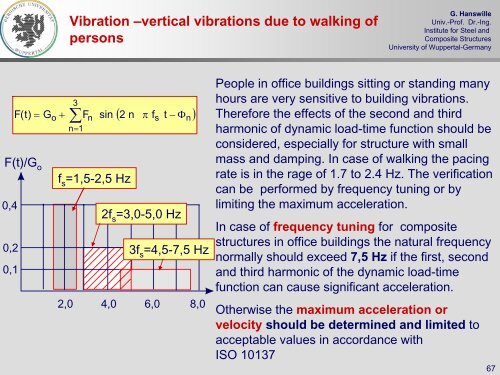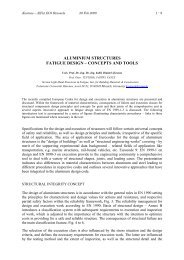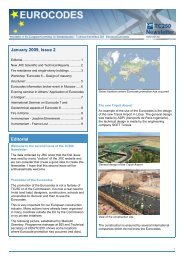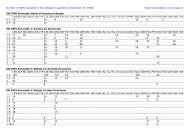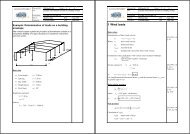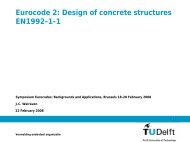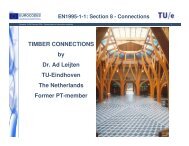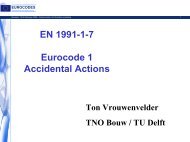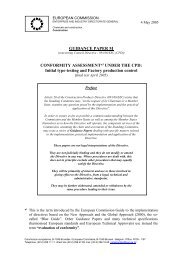Serviceability limit state - Eurocodes
Serviceability limit state - Eurocodes
Serviceability limit state - Eurocodes
Create successful ePaper yourself
Turn your PDF publications into a flip-book with our unique Google optimized e-Paper software.
Vibration –vertical vibrations due to walking of<br />
persons<br />
G. Hanswille<br />
Univ.-Prof. Dr.-Ing.<br />
Institute for Steel and<br />
Composite Structures<br />
University of Wuppertal-Germany<br />
3<br />
∑<br />
F(t) = Go<br />
+ Fn<br />
sin ( 2 n π fs<br />
t − Φn<br />
)<br />
n=<br />
1<br />
F(t)/G o<br />
0,4<br />
0,2<br />
0,1<br />
f s<br />
=1,5-2,5 Hz<br />
2f s<br />
=3,0-5,0 Hz<br />
3f s<br />
=4,5-7,5 Hz<br />
2,0 4,0 6,0 8,0<br />
People in office buildings sitting or standing many<br />
hours are very sensitive to building vibrations.<br />
Therefore the effects of the second and third<br />
harmonic of dynamic load-time function should be<br />
considered, especially for structure with small<br />
mass and damping. In case of walking the pacing<br />
rate is in the rage of 1.7 to 2.4 Hz. The verification<br />
can be performed by frequency tuning or by<br />
<strong>limit</strong>ing the maximum acceleration.<br />
In case of frequency tuning for composite<br />
structures in office buildings the natural frequency<br />
normally should exceed 7,5 Hz if the first, second<br />
and third harmonic of the dynamic load-time<br />
function can cause significant acceleration.<br />
Otherwise the maximum acceleration or<br />
velocity should be determined and <strong>limit</strong>ed to<br />
acceptable values in accordance with<br />
ISO 10137<br />
67


